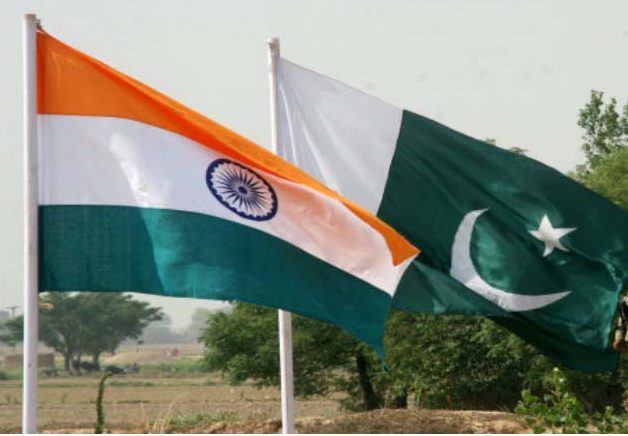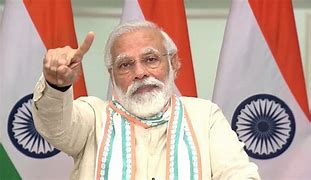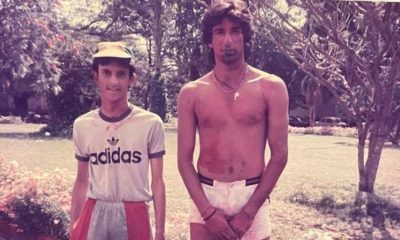Top News
Nuclear war between India, Pakistan ‘most likely’: NYT

A nuclear war between India and Pakistan is “most likely” and the “relative calm” is not a solution as long as the two neighbours refuse to deal with their core dispute of Kashmir, the New York Times has said in an opinion piece.
In the Thursday write-up, the daily’s Editorial Board said that although the India-Pakistan tensions had diffused for now, their “nuclear arsenals mean unthinkable consequences are always possible”.
The board wrote that “this relative calm is not a solution” and the US needed to get involved in defusing the tensions between New Delhi and Islamabad.
“As long as India and Pakistan refuse to deal with their core dispute – the future of Kashmir – they face unpredictable, possibly terrifying, consequences.”
According to the NYT, the next confrontation between the two neighbours might not end “so calmly”.

“With Pakistan’s Army most likely shaken by the Indian raid and unwilling to slide into protracted conflict, Prime Minister Imran Khan returned the pilot to India, in what was seen as a goodwill gesture, called for talks and promised an investigation into the bombing. (Prime Minister Narendra) Modi took the opportunity to back off further escalation”, it said.
“The next confrontation might not end so calmly,” it added.
Tensions between India and Pakistan worsened after a Kashmir suicide bombing on February 14 killed 40 CRPF troopers and was claimed by the Pakistan-based Jaish-e-Mohammed (JeM).
India retaliated by bombing the terror group’s biggest training camp in Balakot, Pakistan. Pakistan hit back with its air force the next day.
Islamabad also captured an Indian Air Force pilot after a February 27 dogfight between the two air forces. He was released on March 1 as a “peace gesture” by Pakistan.
The NYT said the the US “could help India strengthen its counterterrorism capabilities to prevent future attacks and it could encourage India to modify its approach to those opposing its rule in Kashmir, which the UN and other groups say involves widespread human rights abuses.

“And while it’s good when India and Pakistan decide to walk back from the brink, as they seem to be doing now, the US should be ready to assist if they cannot.”
The article stated that Islamabad and New Delhi were “long among the world’s most antagonistic neighbours” and that it was fortunate they found “the good sense to de-escalate”.
The NYT stated: “The JeM, which seeks independence for Kashmir or its merger with Pakistan, took responsibility (for the Kashmir bombing). While it is on America’s list of terrorist organisations and is formally banned in Pakistan, the group has been protected and armed by the Pakistani intelligence service.”
The NYT said that the situation between India and Pakistan “could have easily escalated, given that the two countries have fought three wars over 70 years, maintain a near-constant state of military readiness along their border and have little formal government-to-government dialogue.
“Adding to the volatility, India’s Prime Minister Narendra Modi is waging a tough re-election campaign in which he has used anti-Pakistan talk to fuel Hindu nationalism,” it said.
The daily said that Pakistan “has never seriously cracked down on militant groups that attack India and the Indian-controlled part of Kashmir.
“In recent days, Pakistani authorities said they detained 44 members of various armed groups, including a brother of Masood Azhar, the head of JeM, and planned to seize assets of militants on the UN terrorist list. But Pakistan has rarely followed through on such promises.”
The NYT said that without international pressure, a long-term solution was “unlikely and the threat of nuclear war remained”.
“While the Clinton, Bush and Obama administrations aggressively worked to ensure that India-Pakistan confrontations in 1999, 2002 and 2008 did not spiral out of control, the (Donald) Trump administration has done little but issue a few statements urging restraint.
“It’s hard to see a role as a mediator for Trump, who has shifted the US more firmly against Pakistan and towards India, where he has pursued business interests.
“A solution to a conflict that touches so many religious and nationalist nerves must ultimately come from within, through talks among India, Pakistan and the people of Kashmir,” it said.
Entertainment
Casino Days Reveal Internal Data on Most Popular Smartphones

International online casino Casino Days has published a report sharing their internal data on what types and brands of devices are used to play on the platform by users from the South Asian region.
Such aggregate data analyses allow the operator to optimise their website for the brands and models of devices people are actually using.
The insights gained through the research also help Casino Days tailor their services based on the better understanding of their clients and their needs.
Desktops and Tablets Lose the Battle vs Mobile
The primary data samples analysed by Casino Days reveal that mobile connections dominate the market in South Asia and are responsible for a whopping 96.6% of gaming sessions, while computers and tablets have negligible shares of 2.9% and 0.5% respectively.
The authors of the study point out that historically, playing online casino was exclusively done on computers, and attribute thе major shift to mobile that has unfolded over time to the wide spread of cheaper smartphones and mobile data plans in South Asia.
“Some of the reasons behind this massive difference in device type are affordability, technical advantages, as well as cheaper and more obtainable internet plans for mobiles than those for computers,” the researchers comment.
Xiaomi and Vivo Outperform Samsung, Apple Way Down in Rankings
Chinese brands Xiaomi and Vivo were used by 21.9% and 20.79% of Casino Days players from South Asia respectively, and together with the positioned in third place with a 18.1% share South Korean brand Samsung dominate the market among real money gamers in the region.
Cupertino, California-based Apple is way down in seventh with a user share of just 2.29%, overshadowed by Chinese brands Realme (11.43%), OPPO (11.23%), and OnePlus (4.07%).
Huawei is at the very bottom of the chart with a tiny share just below the single percent mark, trailing behind mobile devices by Motorola, Google, and Infinix.
The data on actual phone usage provided by Casino Days, even though limited to the gaming parts of the population of South Asia, paints a different picture from global statistics on smartphone shipments by vendors.
Apple and Samsung have been sharing the worldwide lead for over a decade, while current regional leader Xiaomi secured their third position globally just a couple of years ago.
Striking Android Dominance among South Asian Real Money Gaming Communities
The shifted market share patterns of the world’s top smartphone brands in South Asia observed by the Casino Days research paper reveal a striking dominance of Android devices at the expense of iOS-powered phones.
On the global level, Android enjoys a comfortable lead with a sizable 68.79% share which grows to nearly 79% when we look at the whole continent of Asia. The data on South Asian real money gaming communities suggests that Android’s dominance grows even higher and is north of the 90% mark.
Among the major factors behind these figures, the authors of the study point to the relative affordability of and greater availability of Android devices in the region, especially when manufactured locally in countries like India and Vietnam.
“And, with influencers and tech reviews putting emphasis on Android devices, the choice of mobile phone brand and OS becomes easy; Android has a much wider range of products and caters to the Asian online casino market in ways that Apple can’t due to technical limitations,” the researchers add.
The far better integration achieved by Google Pay compared to its counterpart Apple Pay has also played a crucial role in shaping the existing smartphone market trends.
Content provided by Adverloom

























